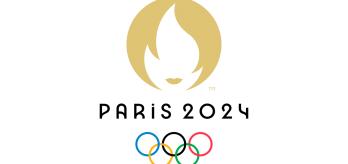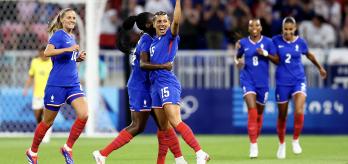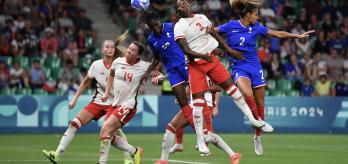In this article, he explains the technical details around the subject, which have also been supported by match data provided by our Football Performance Insights Team.
Line-breaking passes
When we analysed emerging data (up to, and including the semi-finals), it was noted that goalkeepers were attempting more line-breaking passes and completing more successfully, compared to the FIFA Women’s World Cup 2023™. In the Olympics, goalkeepers were attempting an average of 15.3 line breaks per 30 minutes in possession compared to 13.9 in the most recent World Cup.
Their success rates had also improved, with an average of 43% of attempted line breaks completed successfully in 2024 versus 38% in 2023. Germany goalkeeper, Ann-Katrin Berger was ranked number one for attempted line breaks with 121 in her 569 minutes played, while USA goalkeeper, Alyssa Naeher attempted 37 line breaks in 567 minutes played. Berger is ranked third for line breaks completed on 58% while Naeher is second, completing 62%. Spain goalkeeper Cata Coll is ranked number one for successful line breaks, completing 78% of her 27 attempted line breaks in 540 minutes played. However, based on the number of line breaks attempted by Berger, it is clear how influential she has been in her team’s build-up.
Technical factors in line-breaking passes
Being comfortable on the ball with both feet is a basic requirement for top-level goalkeepers, but being capable of averting pressure to play, and playing successfully when under pressure, distinguishes the best goalkeepers from the rest.
“In this day and age, it is crucial for goalkeepers to train with their outfield team-mates to build the relationships and understanding that matter in a game. Offering to receive and movements to receive must be practised together, to create the opportunities for effective build-up play. Technique is very important, but it matters little if the movements and offers to receive are not coming from the goalkeeper to support their defenders when they have the ball, and from the outfield players when the goalkeeper has the ball,” he explained.
Changing the point of attack
In the clips below, Zuberbühler highlights some of the finite details in goalkeeper distributions that facilitate real changes in the point of attack.
Ann-Katrin Berger - Germany
“Clip1 is great example of Ann-Katrin Berger’s outstanding passing. She has so many ways of playing the ball, has great variety in her distributions and this pass is one we have seen a few times in this tournament. When she receives the back-pass she has a number of players dropping in and available to receive, but with a first-time strike of the ball, she plays a longer pass onto Lea Schüller (7) with incredible accuracy. She breaks two lines with this pass, and it is clearly something they had worked on, because when this pass was played, the receiver always had supporting players nearby. In this case, this key distribution was the catalyst for a brilliantly orchestrated goal. It is clear that not many goalkeepers can play passes like this consistently, and with the accuracy that she can,” he explains.
Katherine Tapia - Colombia
In clip 2, the relationship between Colombia goalkeeper Katherine Tapia and her defenders is important. As the ball gets played back to her, her nearest defender does a great job of using her body strength to shield the opposition players from getting direct pressure on her goalkeeper. Once she receives the ball, she takes a couple of crucial touches. The first touch eliminates the approach of the opponent and creates space. Her defender plays an important role but the intelligence she shows with these two touches demonstrates her awareness of the situation. Once she has created that space, she has three offers to receive from supporting defenders and midfielders. Her line-breaking pass into midfield proves to be the start of a key attacking phase that leads to a goal-scoring opportunity.
Chiamaka Nnadozie - Nigeria
Clip 3 sees Nigeria goalkeeper, Chiamaka Nnadozie change the point of attack for her team despite having various offers to receive for shorter passes. When she receives the first time, she plays into her central midfielder but drops a couple of steps before receiving the second time. These little steps make it harder for the opposition to get any pressure on her giving her time to tee up the longer, line-breaking pass into an area where her team has a 4v4 situation against the opposition’s defensive line. The pass facilitates a genuine change in the point of attack.
Summary
Goalkeepers in the Women’s Olympic Football Tournament 2024 have attempted and successfully completed more line-breaking passes than in FIFA Women’s World Cup 2023. Their excellent technique and relationships with outfield players is notable with various offers to receive when the goalkeepers are in possession of the ball. It is the combination of these two factors that makes successful line-breaking passes possible.

























